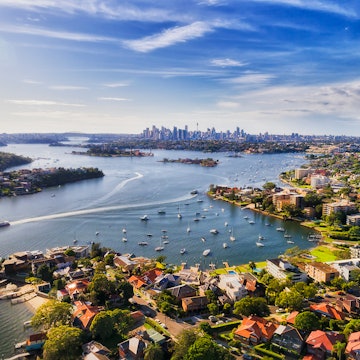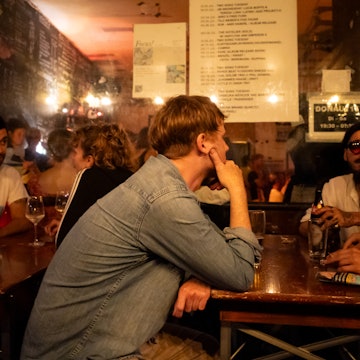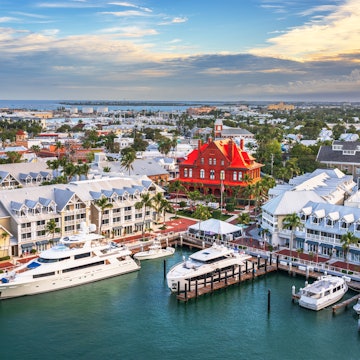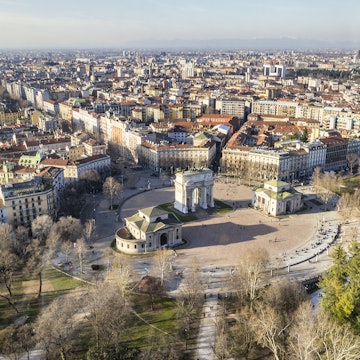

Head to the River Po for some quiet time away from the bustle of Turin's center © Zigres / Shutterstock
Overlooked by the Alps in the northwestern Piedmont region, Turin (Torino) is Italy’s fourth-largest city.
Venture beyond the popular city center and you’ll discover there’s more to Turin than its royal palaces and showpiece piazzas. Turin's outlying neighborhoods are as diverse as they are fascinating, featuring everything from avant-garde art galleries to off-beat museums, sprawling flea markets and alternative, post-industrial nightspots. Here’s our guide to Turin’s top neighborhoods and what each has to offer.

Center – Via Roma & Around
Best for seeing the sights
This neighborhood forms the core of the historic center and it’s here you’ll find headline sights such as the Museo Egizio and Palazzo Reale. Also here, a short walk from the central Piazza Castello, is the city’s 15th-century cathedral, the last resting place of the Turin Shroud.
The main drag is Via Roma, an elegant porticoed street that connects with the central train station, Stazione Porta Nuova. Lining the way, upmarket boutiques and flagship stores offer high-end designer shopping.
Accommodation in the area ranges from business hotels to B&Bs and apartment rentals. Prices reflect the prime location but first-timers and those on a tight schedule will appreciate being in the heart of the action. And with plenty of restaurants, bars and historic cafes such as Caffè Torino to choose from, you’ll be spoiled for choice when it comes to places to eat and drink.
Center – Via Po & Around
Best for riverside bars
A refined, aristocratic air hangs over this part of the historic center. Sober 18th- and 19th-century townhouses line the streets which are packed with charming piazzas, museums and shops.
Via Po, its main street, leads from Piazza Castello to Piazza Vittorio Veneto, a vibrant, cafe-fringed square known for its riverside bar life. To the north, the soaring 167m-high (548ft) spire of the Mole Antonelliana provides one of Turin’s signature sights as well as an amazing perch for soaring city views. The Mole also hosts one of the city’s most popular museums, the Museo Nazionale del Cinema.
This area can easily be covered on foot and with some fine hotels, it’s a top choice for a central stay.
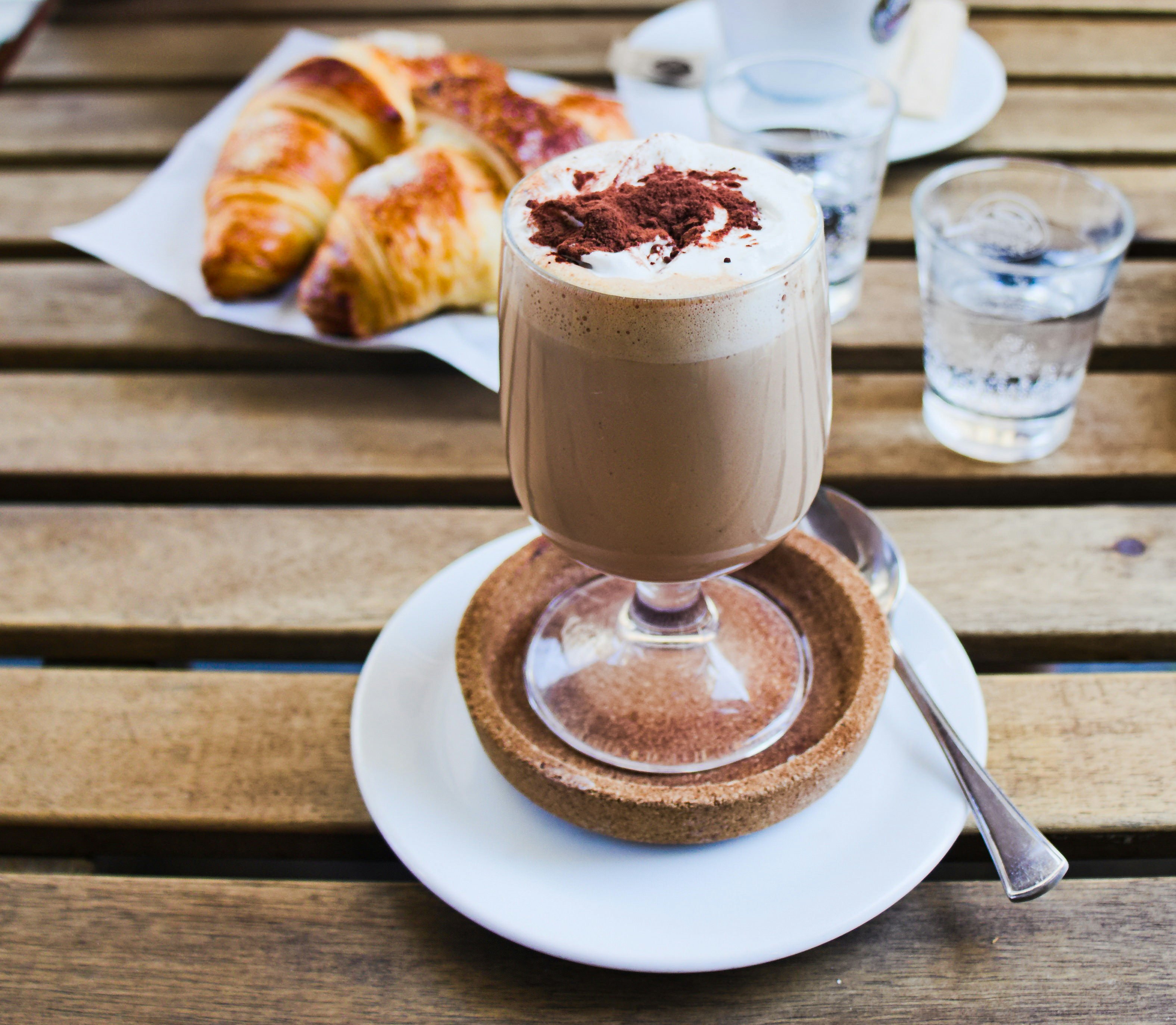
Center – Quadrilatero Romano & Porta Palazzo
Best for leisurely strolling and shopping
This atmospheric pocket of the historic center extends northwest of Piazza Castello. Known as the Quadrilatero Romano, it’s a charming area of tightly-packed lanes, historic boutiques, cafes and popular aperitif spots. It’s also the oldest part of Turin, dating to the 1st century BCE when it started life as a Roman colony called Julia Augusta Taurinorum.
Best explored on foot, the neighborhood offers some quintessential Turin experiences. You can learn about the Turin Shroud (unfortunately though, you won't see it as it's carefully locked away to ensure its preservation) at the Museo della Sindone; you can sip on a Bicerin (an espresso and hot chocolate drink) at its 18th-century birthplace, the Caffè Al Bicerin; and you can join locals for a classic early-evening aperitivo at perennial favorite Pastis.
Shoppers are also well catered to – modern chain stores line Via Garibaldi, while colorful produce stalls pack Porta Palazzo, one of Europe’s largest markets.
San Salvario
Best for cheap eats and late-night cocktails
Bohemian, party-loving San Salvario feels a world away from the rarified palaces of the historic center. In reality, the neighborhood is within easy striking distance of the centro and only a stone’s throw from Stazione Porta Nuova.
Its main sight is Parco Valentino, Turin’s much-frequented riverside park, which provides a welcome burst of greenery. But more than sightseeing, this area is all about its multicultural vibe, its trendy boutiques and affordable bars and clubs. This is the place to snack on tapas and sip on craft cocktails in cool, shabby-chic bars.
Accommodation-wise, there are a few decent options, including the Tomato Backpackers Hotel, one of the few central places catering to budget travelers.
Note that the streets in the immediate vicinity of the train station can be a bit dodgy at night, so be on your guard, particularly if traveling alone.

Vanchiglia, Vanchiglietta & Aurora
Best for alternative cool
Historically working class, this arty, multi-ethnic area northeast of the center is a hub of creative energy. You’ll find contemporary galleries in former factories, bike shops with slow food cafes, upmarket restaurants and organic fast-food joints. Murals line street walls and modern architecture appears in the form of the Norman Foster-designed Campus Universitario Luigi Einaudi.
Museum-goers can learn about the celebrated Lavazza coffee dynasty at the family-friendly Museo Lavazza, while bargain hunters can search for deals at the Saturday Balôn flea market. Nighthawks will enjoy the area’s animated nightlife.
The neighborhood is also a good option for a place to stay. It’s well connected to the center, yet offers a real local vibe and has a decent choice of accommodation for all budgets.
Crocetta, San Paolo and Cenisia Sud
Best for post-industrial grit and contemporary art
Really three districts, this swathe of south central Turin fans out from Crocetta, an upmarket residential area of tree-lined streets and elegant villas. To the west, and further from the historic center, post-industrial San Paolo and Cenisia Sud strike a different look with their converted factories, trendy hangouts and student vibe, courtesy of the Politecnico di Torino.
The area is central to the city’s contemporary art scene and harbors several important addresses, including the astounding GAM museum and the Fondazione Sandretto re Rebaudengo.
As a base, Crocetta makes a good alternative to the center. It’s quiet, easy to reach, and has some excellent places to stay, including the boutique Art Hotel Boston.
Borgo Po
Best for escaping the crowds and stunning views
Over the river Po from the center, the neoclassical Chiesa della Gran Madre di Dio welcomes you to the Borgo Pio district. This tranquil, leafy district, sandwiched between the river and verdant hills, is one of Turin’s most sought-after and expensive residential areas.
There’s not a huge amount for visitors but you can enjoy stunning city views from the Monte dei Cappuccini and from the Italianate gardens of the 17th-century Villa della Regina.
Accommodation is fairly thin on the ground but if you’re after a quiet, safe area away from the hustle of the city center it’s worth considering.
You might also like:
Chocolate, coffee, football and Fiat 500s: discover Turin in 10 museums
The best free things to do in Turin after you've blown your budget on Eurovision
12 ways to visit Turin on a budget: daily costs, meal deals, and money-saving tips









